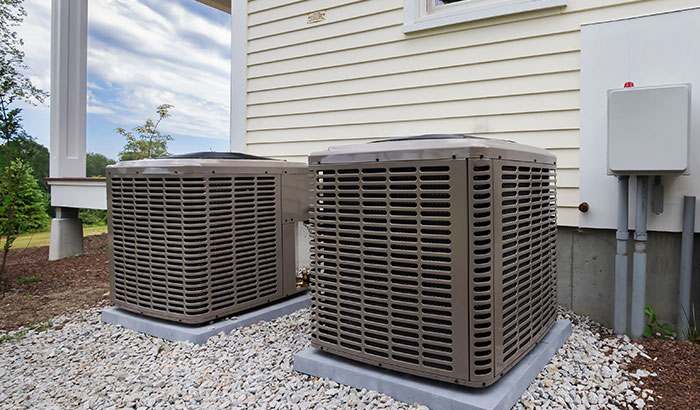Discover how investing in a high-performance HVAC system can maximize the benefits of your quality siding, boosting your home’s energy efficiency, indoor comfort, and overall value. By understanding the synergy between these two critical components, you can ensure your home is both comfortable and efficient.
The Symbiotic Relationship Between HVAC Systems and Siding

Enhanced Energy Efficiency: A modern, efficient HVAC system works seamlessly with quality siding to maintain consistent indoor temperatures. This combination reduces the strain on your HVAC system, leading to lower energy bills. While high-quality siding provides excellent insulation, the efficiency gains can be compromised if paired with an outdated HVAC system. Upgrading your HVAC system ensures that your home fully capitalizes on the insulating properties of your siding, resulting in optimal energy efficiency.
Improved Indoor Air Quality: Modern HVAC systems come equipped with advanced filtration options that, when paired with well-sealed siding, help keep outdoor pollutants at bay. This synergy is essential for maintaining a healthier indoor environment. Additionally, while properly installed siding prevents moisture ingress, managing indoor humidity levels requires an efficient HVAC system. Together, they prevent mold and mildew growth, enhancing the overall indoor air quality.
Consistent Comfort and Climate Control: Insulated siding helps in maintaining indoor temperatures, but a high-efficiency HVAC system ensures these temperatures are evenly distributed throughout the home. This eliminates hot or cold spots, providing a consistently comfortable indoor environment. Moreover, many modern HVAC systems come with smart technology that allows for precise control of your home’s climate, complementing the thermal performance of quality siding.
Extending the Lifespan and Performance of Both Systems
Reducing System Load: Energy-efficient siding reduces the workload on your HVAC system, allowing it to operate more efficiently and last longer. This synergy means fewer repairs and replacements, ultimately saving you money in the long run. By reducing the strain on your HVAC system, you enhance its longevity and reliability, ensuring it performs optimally throughout its lifespan.
Long-Term Investment: Upgrading both your siding and HVAC system not only improves comfort and efficiency but also boosts your home’s market value. Prospective buyers appreciate the combination of high-quality siding and a modern HVAC system, as it signifies a well-maintained and energy-efficient home. This integrated approach to home improvement enhances both immediate comfort and long-term property value.
Tips for Homeowners
Regular Maintenance: To ensure both your siding and HVAC system continue to perform optimally, regular maintenance is essential. This includes checking for any damage, cleaning filters, and ensuring that seals remain intact. Engaging professionals for routine inspections and maintenance can help preemptively address issues, ensuring that both systems work harmoniously.
Upgrade Strategically: When planning home improvements, consider upgrading your HVAC system alongside your siding. This integrated approach maximizes the efficiency and comfort benefits of both investments. Conducting an energy audit can also identify areas where improvements can be made, helping you prioritize upgrades for the greatest impact on efficiency and comfort.
Investing in a high-performance HVAC system complements the benefits of quality siding, enhancing your home’s energy efficiency, indoor air quality, and overall comfort. For more information on how to upgrade your HVAC system to maximize the benefits of your siding, visit our recommended HVAC specialists.
Check out our trusted HVAC partners at hvaccontractorsinfo.com to explore the latest in energy-efficient heating and cooling solutions, designed to work perfectly with your high-quality siding.